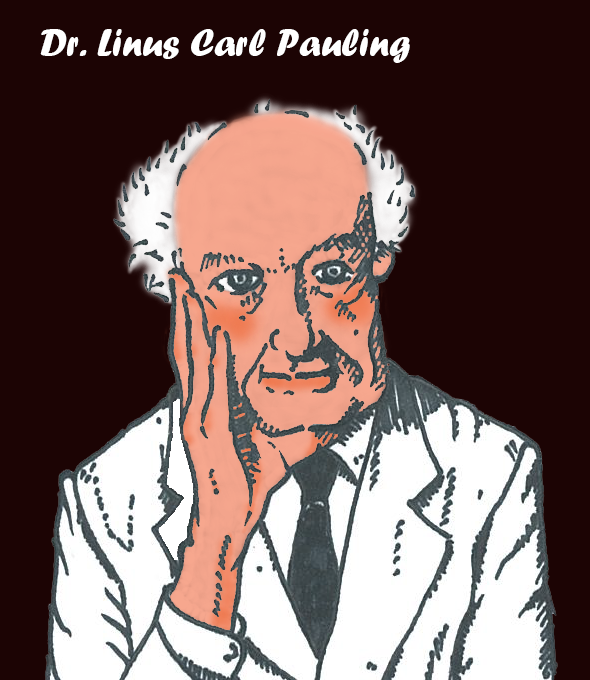Foreword
Vitamin C has become the focus of attention for its role in maintaining our health and protecting our body from diseases. This could be the start of the second Vitamin C-boom, as more and more people are recently practicing the “Vitamin C Therapy”.
Research on vitamin C has greatly progressed owing to the Nobel Prize in Chemistry and Nobel Peace Prize laureate, Dr. Linus Pauling. In addition to its known fundamental role, its diverse functions and benefits have become recognized. Taking high dosage of vitamin C, exceeding its minimum requirement could keep you healthy and reduce the risk of contracting lifestyle-related diseases.
This introductory handbook provides concise and easy-to-understand description of vitamin C. Research and academic journals of Saga University Professor Emeritus Akira Murata and his non-scholarly publication (i.e. “New Vitamin C and Health” and “Vitamin C Health Studies”) are used as reference for this handbook.
Eating food (vegetables and fruits) is the natural way to obtain vitamin C. According to the Ministry of Health, Labor and Welfare, 100 mg of vitamin C is the recommended dose to be taken from daily meals. However, only half of it could be ingested from dietary sources. Lack of it could be treated with dietary supplements. It has become evident that by taking a large amount of vitamin C, improvement of health and prevention of various illnesses could be achieved. This clearly expressed handbook is for people who are interested in vitamin C, taking vitamin C, and planning to take vitamin C.
Vitamin C’s Role
Vitamins are classified as either water-soluble (e.g. vitamins B1, B2, C) or fat-soluble (e.g. vitamins A, D, E, K) vitamins.
Poor vitamin intake could cause vitamin deficiency diseases. For example, lack of vitamin A could lead to blindness; lack of vitamin B1 could cause beriberi; lack of vitamin C could give rise to scurvy; and lack of vitamin D could lead to rickets.
Vitamins could not be produced in our body and therefore should be taken from dietary sources. When intake from food is inadequate, it would cause vitamin deficiency. Lack of vitamin C in our diet would lead to a condition called scurvy. Nowadays, though, this condition is rare as vegetables and fruits contain a very small amount of vitamin C (below 10mg) that could help us prevent this disease.
This small amount of vitamin C that is not enough to maximize its benefits is a problem at this point. Most of the vitamins could not be made in the body of humans and animals, but there is a characteristic that is unique to vitamin C. Mammals have the ability to produce vitamin C in their bodies. Just like humans, monkeys and guinea pigs are not capable of producing vitamin C in their bodies, which would be an exception to the rule for their class.
Vitamins are normally beneficial even in small amount, except for vitamin C. Recommended daily intake of vitamins B1 and B2 is only about 1mg, while vitamin C is 100 mg – hundred times the amount of the two. Pharmacological benefits of vitamin C, which would be described later, levels at around 2 – 3 grams. As for the vitamins B1 and B2, they only function as enzymes activating coenzymes. On the contrary, vitamin C has other benefits compared to other vitamins.
Dr. Pauling and Vitamin C

Dr. Pauling is one of the greatest scientists of the 20th century. His contributions to the field of science and peace are not only recognized by the Nobel Prize Committee, but also by the east, such as the former Soviet Union’s Lomonosov Gold Medal and International Lenin Peace Prize – equally as prestigious as the Nobel Prize. He has also contributed to the fields of biology and medicine.
Dr. Pauling became interested in vitamin C in 1966, when he was 65 years old. Finding out that there were doctors who were using large doses of vitamin C, which was effective even with small dose, aroused his interest. He thought about the high dose intake of vitamin C, made a thorough research, and studied about it.
Vitamin C, apparently different from other vitamins, appeared to be special. Unlimited benefits of high intakes of vitamin C have provided insight and have excluded the idea that vitamins are needed in small amounts. For Dr. Pauling, high doses of vitamin C seemed a great idea that was worth pursuing. The more that was learned about it, the more it seemed enigmatic.
Dr. Pauling has proposed the new medical concept of “orthomolecular medicine”*1. Its unique concept is that it uses safe nutritional substances and biological materials, instead of powerful drugs that may have toxic and side effects. It emphasizes the concept of nontoxicity and side-effect free, rather than the immediate effects. In addition to that, gentle restoration and maintaining health are also part of the concept. Vitamin C is not just an aspect of orthomolecular medicine, but the most important substance in it.
Dr. Pauling has researched about colds and vitamin C through research papers and discovered that this research has been conducted for a long time. However, the amount of vitamin C used was as little as 100 – 200mg. This has caused uncertainty on the conclusion of the research. In spite of that, he has discovered that small amount of vitamin C was effective to some extent, and he has confidently concluded that it was beneficial and has started to take it himself as well. After that, he has published the “Vitamin C and the Common Cold”.
*1The idea is to adjust a concentration of molecule inside the body so that it functions normally.

